You’ve been setting your weight loss goal all wrong!
A big part of the success you see here at Eat Like a Bear lies in how we set our weight loss goals. You very likely are thinking about this all wrong, and each of us can certainly improve our goal-setting game. Let’s get to it!
We call it the “Big Goal” in weight loss here at Eat Like a Bear and it is really very simple. Picture what you will be doing one year from now out living your new life. What you look like and what pants size you will be wearing is completely irrelevant.
What will you be doing one year from now in your new life?
That’s your Big Goal.
Your own Big Goal needs to be specific for you. It needs to come from right within your own heart.
Important side note: Since this may be the most important thing we do here at Eat Like a Bear, I have taken the time to be extremely thorough and to give you a deeper education on this concept. This is the sort of content that is in our member-funded community the Deep Den, but I am making an effort to fund this content via paid partner links toward the bottom. If you see a link to a resource, assume that Eat Like a Bear earns a commission if you use the link to purchase. If you do, thank you because you have just helped fund this important premium content here at Eat Like a Bear.
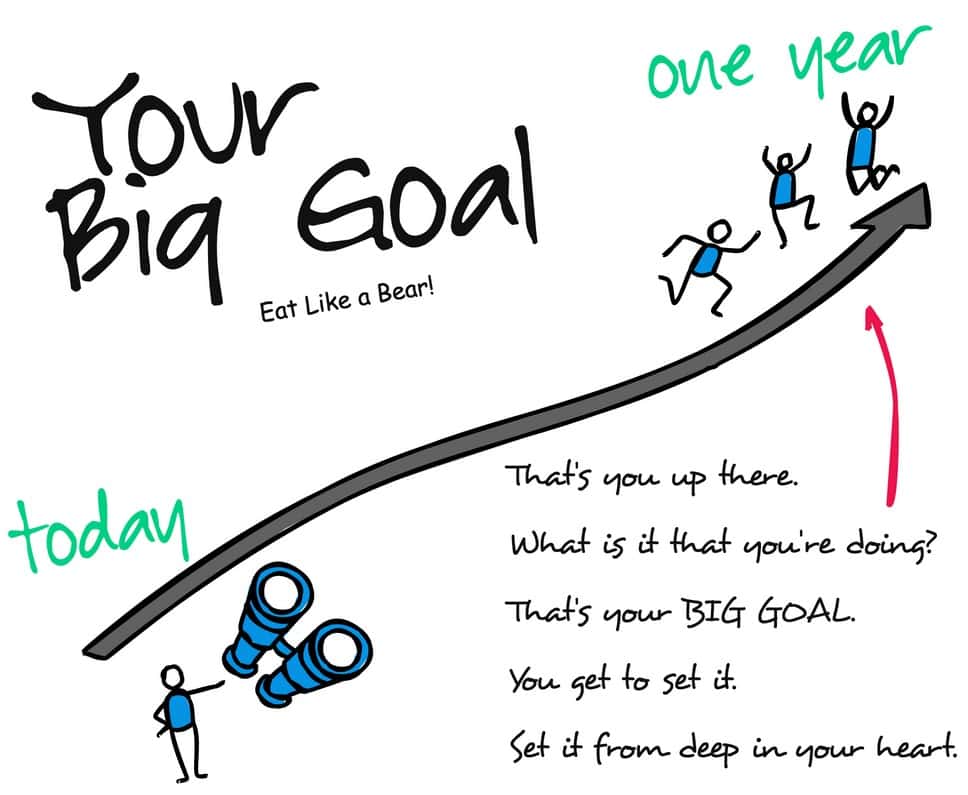
You may have a whole lot of little goals under all of that — a weight loss goal for this month, a list of five things you’ll do each day, new strategies that you are learning.
Those are all GREAT, but they are not your Big Goal.
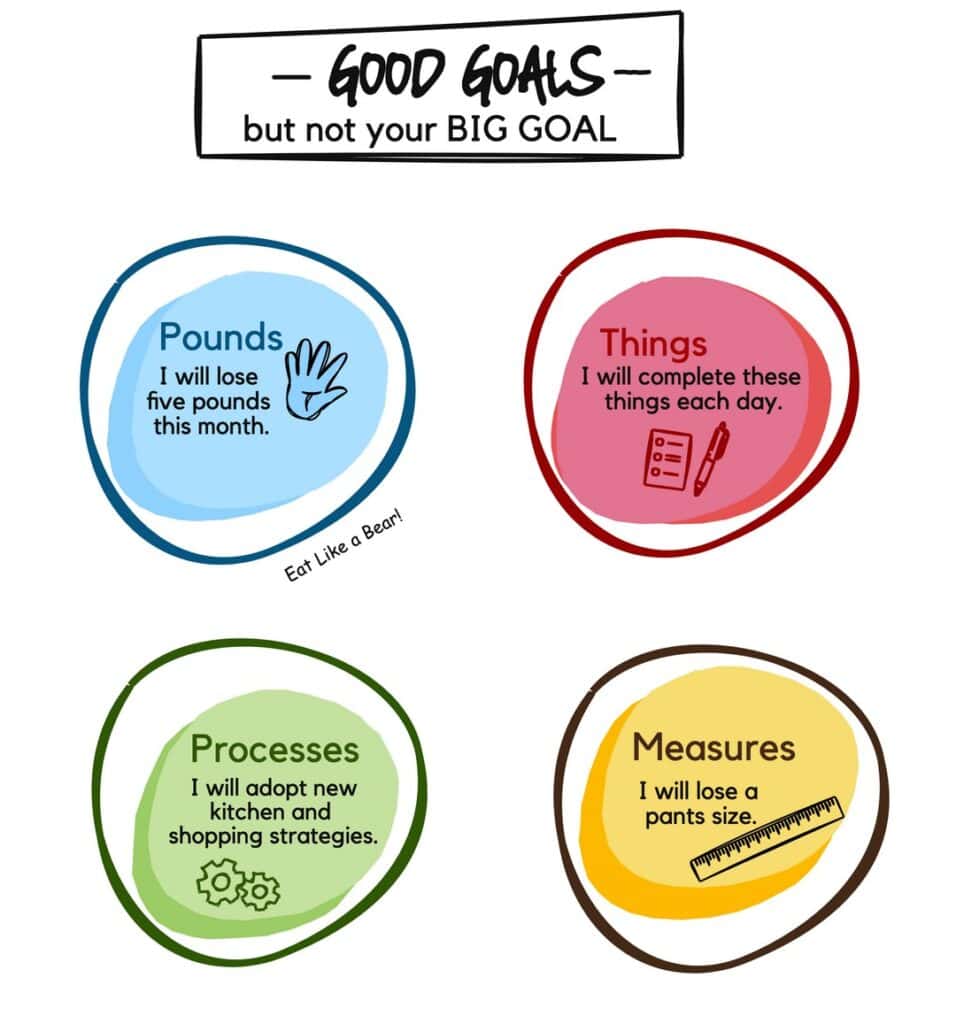
I first posted about the Big Goal on YouTube back in 2020. The original video and a follow-up video from the same season are below, but I provide the most recent version first.
The Original BIG GOAL Videos
We Need a Big Goal to Lose Life-Changing Amounts of Weight
How is it that we keep eating the doughnut or the pizza or the cookie when that decision is obviously keeping us from leading the life we want to lead?
Human beings are supposed to be rational, seeking self-preservation, and yet here we are engaging in behavior daily that works against that same self-preservation.
We know the cookie is bad for us and we keep choosing it, just like smokers know that smoking is bad and that alcoholics know the whisky is bad.
So why do we do it?
It doesn’t appear to make sense.
In weight loss, it’s even a bit more complicated because with a history of diet failures, it often feels like the cookie-eating decision doesn’t matter because we’re going to stay fat regardless of our decisions.
But let’s put that added weight loss complication aside for just a bit and look at the cookie-eating in the larger context of that sort of behavior we find ourselves in as smokers and drinkers: One time really doesn’t matter, but the pattern adds up in a powerful and unhealthy way.
Choosing that Bite: Why the Doughnut Always Wins
The choice of the doughnut wins pretty much every time (at least consistently enough that we stay fat). The reason is simple and obvious: The doughnut tastes great and the payoff is immediate.
Let’s look at this payoff a little closer and engage in a thought exercise to do so.
We take the bite, we experience the flavor and texture, and we feel immediate satisfaction and comfort. We take another bite. We eat the doughnut and maybe even eat two or more.
Imagine a universe where the flavor and texture experience does not kick in immediately. We take a bite and do not experience flavor for an hour, or for an entire day.
Let’s visualize it.

In this universe, is it easier to resist the doughnut?
Research (and common sense) gives a resounding “Yes.”
Yes, the doughnut would be easier to resist if it did not have an immediate pay-off.
So in that universe, how would we view the choice of the doughnut?
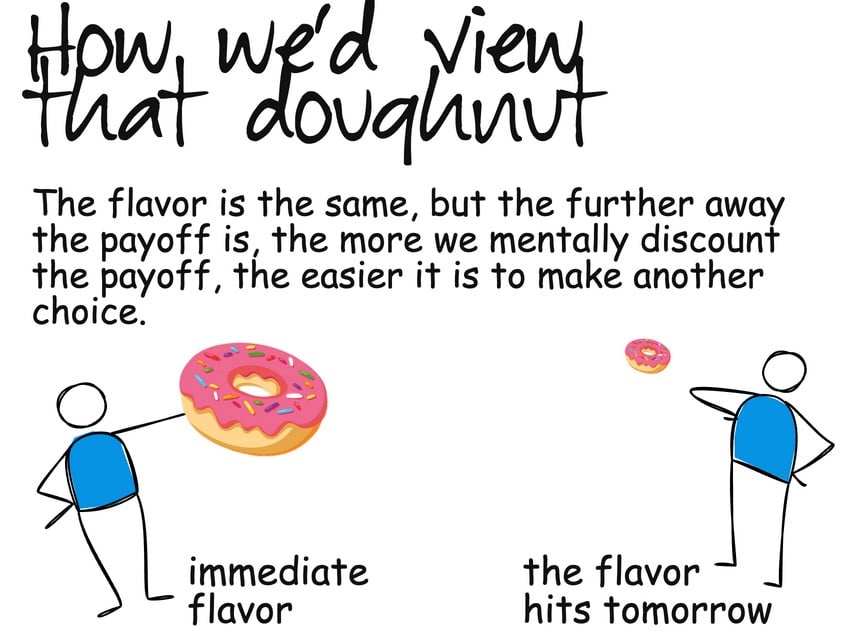
Take a moment and consider all of this: Would it be easier to resist all of these temptations if the flavor didn’t kick in for an entire day?
I suspect your answer is “yes,” and if you hang with me you’ll see why all of this matters in setting your Big Goal.
If you can accept my claim that the power of the doughnut lies in its immediate payoff in flavor, you are likely to agree with each of these statements:
- The doughnut would not be as tempting if we took a bite but couldn’t taste the doughnut until tomorrow.
- If our weight on the scale would change immediately after eating broccoli and foregoing doughnuts, we would eat far more broccoli and far fewer doughnuts.
However, our dilemma is that we are in the universe where we experience the flavor of the doughnut immediately and where it may take days or weeks of consistently avoiding that doughnut to observe a change on the scale.
That’s a tough universe to live in and it’s even worse than all that.
Compare two choices and their respective pay-offs: Choose the doughnut and get immediate satisfaction OR forego the doughnut consistently for a month to lose weight.
The pay-off with the doughnut is immediate. The pay-off with the pounds lost is a month away.
What about that choice to forgo the doughnut in order to lose pounds next week or next month? The payoff of weight loss IS real, however, because the payoff is in the future, we will discount it. It will become smaller in our mind.
We might call it “payoff shrinkage.”
Just like the payoff of the doughnut would essentially become less if we had to wait a day for the flavor, the payoff for pounds lost is smaller because we have to wait for it.

Here’s the hard truth: It is very difficult to forgo the doughnut long enough and consistently enough to meet long-term health goals. (It’s especially complex when we’ve had decades of diet failure, but that’s a whole other complex topic.)
That Payoff Shrinkage and Our Dilemma
We all know if we ate all healthy and saw the changes on the scale immediately, we would be far more likely to keep making those choices.
Imagine a group of us facing the doughnut choice.
If our group had to wait 5 hours to see those changes on the scale, we would all probably be pretty likely to keep forgoing the doughnut.
If we had to wait and entire day to see scale changes, some of us would grab the doughnut, but a good number of us would still be avoiding it.
What if we had to wait a week or a month for the scale pay-off and that doughnut was right in front of us? By then, many of us would be eating the doughnut.
And the fact is that it DOES take weeks and months to see real actual weight loss on the scale and so a whole lot of doughnuts creep in. That’s just a reality and we all know it to be true.
So what do we do about this dilemma?
Goal Types and Payoff Shrinkage
The payoff of the doughnut is immediate but longer-term goals like losing 10 pounds or losing a pant size experience payoff shrinkage, especially the farther into the future they appear.
Create a shorter payoff? Create a larger payoff? What to do?
Because of this dilemma, many people will recommend setting much smaller goals that you can reach quickly.
“Focus on five pounds at a time!”
It’s not bad advice, but even five pounds may take more than a month to lose, especially if you are in a lower weight class.
A month is a pretty long time when our culture provides daily (hourly, minutely…) opportunities for the doughnut.
What if we took this strategy: Make the payoff even larger. Lose more pounds. Lose 100 pounds!!!
The payoff is sure a lot greater when you lose 100 pounds (I know personally), HOWEVER, the payoff is also far further into the future and, therefore, will SHRINK SHRINK SHRINK.
Plus, “100 pounds” is ultimately just a number.
As humans, numbers simply don’t touch our hearts as deeply as feelings and experiences.

Your Big Goal
I opened with this concept and will put the graphic here again.
Your Big Goal is what you will be doing a year from now while you’re out living your most vibrant life.
It’s not how many pounds you’ve lost or what sized pants you’re wearing. It’s not what you’re going to look like. It’s what you will be doing and how you will be feeling out there in your new life.

There is a simple reason I recommend that you set a Big Goal: it is simply far more likely to consistently compete with the doughnut.
Your Big Goal has key elements:
- Your Big Goal is a year out. You have TIME in this year to drive life-changes in your health from consistent decisions.
- Imagining your own Big Goal touches your heart. You have chosen your own Big Goal from your own heart. It will touch you deeper and provide you with more inspiration than a basic weight loss goal.
- Your Big Goal ideally includes a complete physical experience, allowing you to imagine the sights and sounds and aromas as you are out living your most vibrant life.
But also….
Your own Big Goal experiences shrinkage just like any distant goal does. This is partly why you need to choose one that comes from deep in your own heart. It will shrink but still be pretty darned big.
Keeping It Front and Center
We’re not likely to achieve life-changing weight loss without a Big Goal, but it does take more effort than simply setting one.
We need that Big Goal to be front-and-center in our minds and hearts every minute of the day, so that when we face the cookie or the doughnut, we can actively work to compare the immediate benefit of cookie-eating to the long-term benefit of our Big Goal.
It all becomes easier and more automatic if we become strategic in our own lives and set up structures to encourage choosing the Big Goal over the cookie.
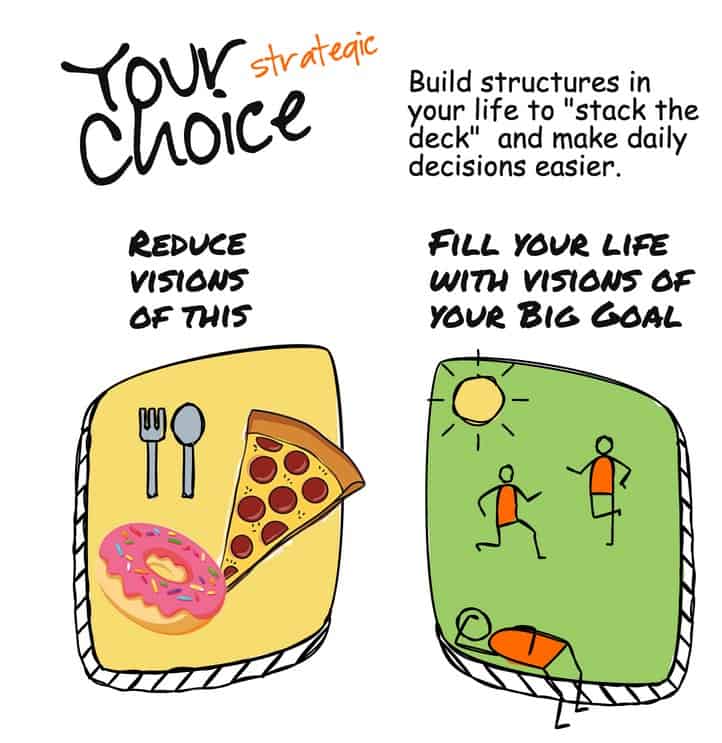
Recognize the Dilemma and Stack the Deck
A big part of my own success in weight loss is that, after 48 years of struggle with weight loss, I got in and I completely stacked the deck against the doughnut. I did so in MANY ways, most of them topics unto themselves.
You can reduce visions of doughnuts and pizza by cleaning out your pantry. That’s obvious. It’s one of the “jump start” strategies you get when you enter the Deep Den. (Find that space here if you’re a member.)
You can use visual tools like vision boards to help you envision your Big Goal, keeping those visions front-and-center.

Engage in Your Big Goal Daily (Hourly, Minutely…)
My own Big Goal was to hike. At 280 pounds with an injured knee, I was not able to hike. However, I did something very powerful that I did not appreciate at the time: I got out and engaged with my Big Goal daily.
My teenage son was an avid hiker but too young for a driver’s license. I drove him from trailhead to trailhead.
I limped around at the top of those trailheads and I collected pine needles or juniper berries and I brought them hope an infused them in vinegar. They flavored my vinegars and I used those vinegars in my meals.
What culinary brilliance!
That’s what I thought at the time, and it was culinary brilliance.
But it was more brilliant than that: Making pine needle vinegar gave me a meaningful way to engage on those trailheads when I might have otherwise been mopey and focused on my limp and my limitations. I focused instead on collecting pine needles for vinegar. I could do that.
I then took the trailhead home with me and engaged with it again as I made vinegar. I engaged yet again when I ate the vinegar.
I stayed engaged with my Big Goal daily for a year to lose weight.
I have stayed engaged with my Big Goal and have leaned into it in maintenance (despite major life traumatic events back here that would have easily had me gain the weight back in years past).
Here’s a video where I make some of that vinegar.
Tools to Stack the Deck and Stay Engaged with Your Big Goal
I will add tools to this section as I have time. As I mentioned at the opening of this too-long article, this post is paid for by the tools below. I receive referral fees for anything you might buy via these links and those fees will hopefully pay for this post.
You can help support the free-to-you content on this site by using these links should you choose to buy any of these tools. You can share this post with a friend. A friend of yours might change their lives by finding us, and they might also share this post or buy a tool.
You can also join the member-funded Deep Den where we have an abundance of content like this, along with regular weight loss challenges. (Find more about the Deep Den here — CLICK!.)
These are also just really great ideas. You should implement them with any tools you already have and become our next success story.
Photographic Tools
Imagine your Big Goal.
Find photos representing it.
Cut photos out from magazine and newspapers. Find them on Facebook, print them out, and hang them on your refrigerator.
You can do this right now with things already in your house.
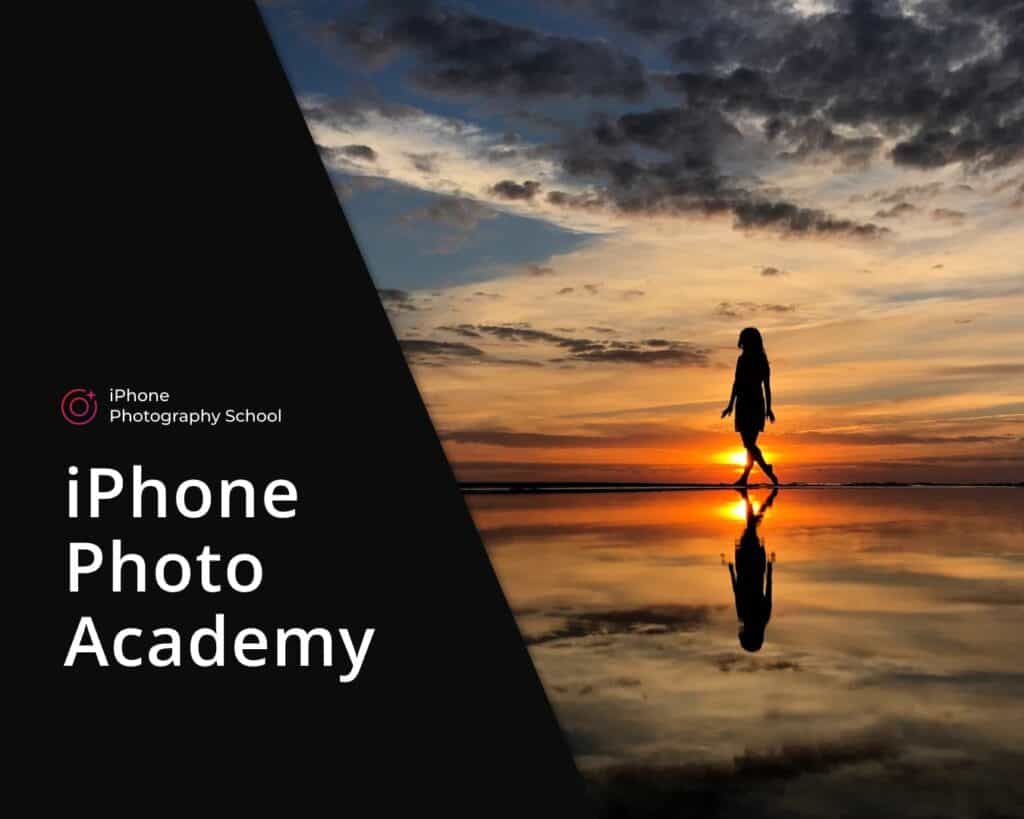
Photos of WHERE and WHAT
Where will your Big Goal take place? Is there a place? Is it your little street or neighborhood park? Is it a beach or a meadow? Get some pictures!
What will you be DOING? Can you capture that concept in a photo? Do you see a kayaker paddling in the distance? Make them a subject of your photo if your Big Goal is to kayak.
Level up this portion by leveling up your photographic skills. Here’s where I have a strong recommendation of Emil Pakarklis’ iPhone Photography School (CLICK!) to use that phone in your pocket and improve the photos you are capturing out there. He has excellent coverage of the basics you will need to improve your composition, use of natural lighting, and iPhone features. If you’re into photos and have an iPhone, the course is worth every penny. (In fact, I’ve gotten multiple courses from Emil.)
(I took the photo below of my son Frederick in a kayak on Lake Michigan. I shot it with an iPhone. Feel free to use it if your Big Goal is to kayak. Picture yourself there at sunset on Lake Michigan. A silhouette photo is a great type of photo that allows us to envision ourselves in that same situation.)
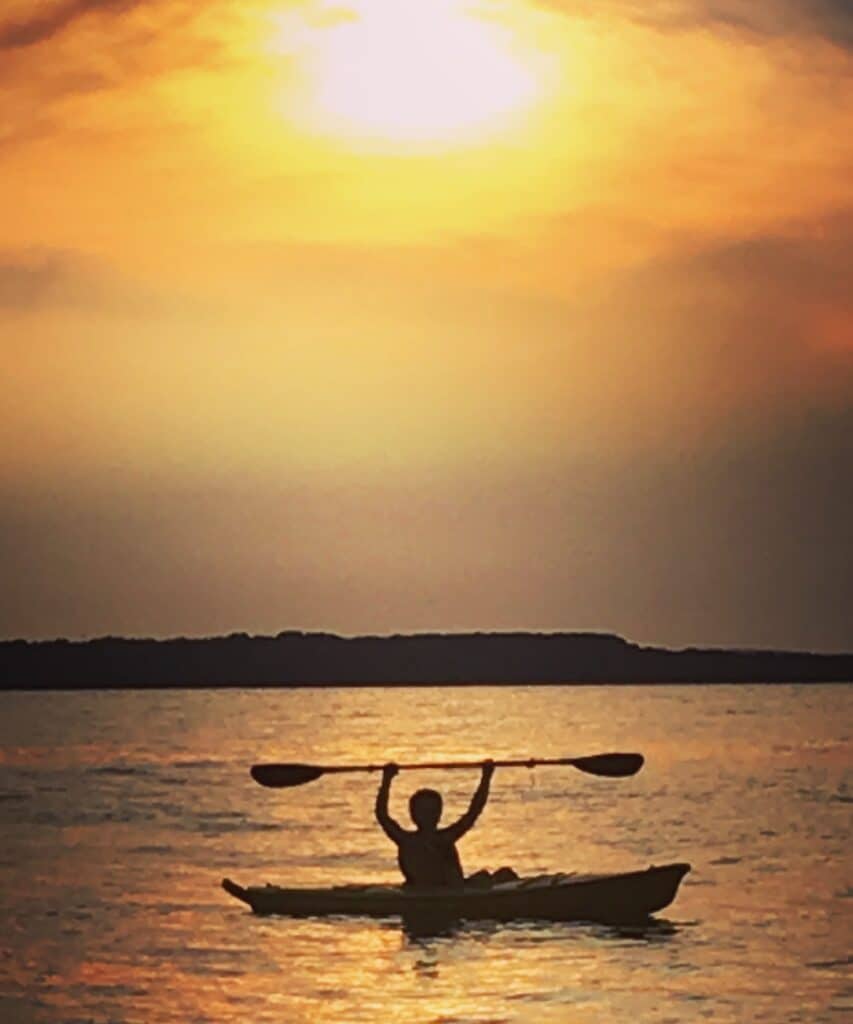
Photos of WHERE, WHAT, and WHO
Ideally, I’d really like you to be in those photos, but not all of us are real big on photos of ourselves, so “photos of WHERE and WHAT” is a good place to start.
Coming from a person who shied away from all photos for nearly fifty years, you may need to push yourself to getting in some of these photos.
I had a real breakthrough on this myself lately. Community members may have noticed a dramatic increase in the number of photos I’ve posted out on hikes.
That’s due to these game-changing tools.
The first was that I stopped taking selfies. Don’t get me wrong. Selfies are fun and everyone should keep taking them. However, I will admit that when I am about to snap a selfie and see myself in that screen, I pretty much always think I look pretty stupid. Maybe I do, maybe I don’t, but the energy of the photo is almost never what it could be.
All of the recent photos come from the main iPhone camera on the back of the phone. I look directly into the lens. I imagine I’m saying “hi” to you from the trail. That’s my purpose and my energy is just so much better when I’m saying “hi” to someone versus looking at myself.
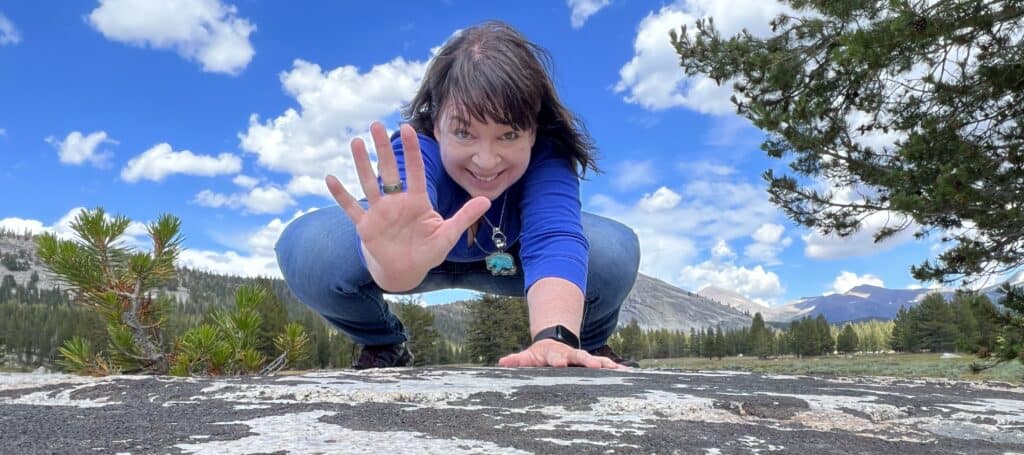
You can achieve this very simply by setting the timer on your camera for 10 seconds and placing yourself in the frame before the shutter goes off. You can have a little wireless “clicker” that will snap the shutter for you.
But the tool that changed my life on this point is one you may already have: the Apple Watch. Your Apple Watch syncs with your phone so that you can see the image your phone is about to take. Set your phone on a tripod, open the camera app, open the camera app on your watch, and place yourself in the frame. Snap the 3-second timer on the watch to release the shutter. It is a fun easy way to get a lot of photos.
Your photos will be FAR better if you know principles like lighting and composition, so do take Emil’s class to level up your photos. (Here’s Emil’s class again — CLICK!)
Photography Gear
Coming soon….
Share Your Big Goal Photos!
Keep your own Big Goal front-and-center and inspire our larger community by sharing your own Big Goal photos. Share them in our Facebook groups or share them out in your public social accounts using the hashtag #biggoal. I’d love to find you out there!

I do add ACV to my homemade electrolyte drink of lemon juice, cream of tartar and Himalayan sea salt. Always.